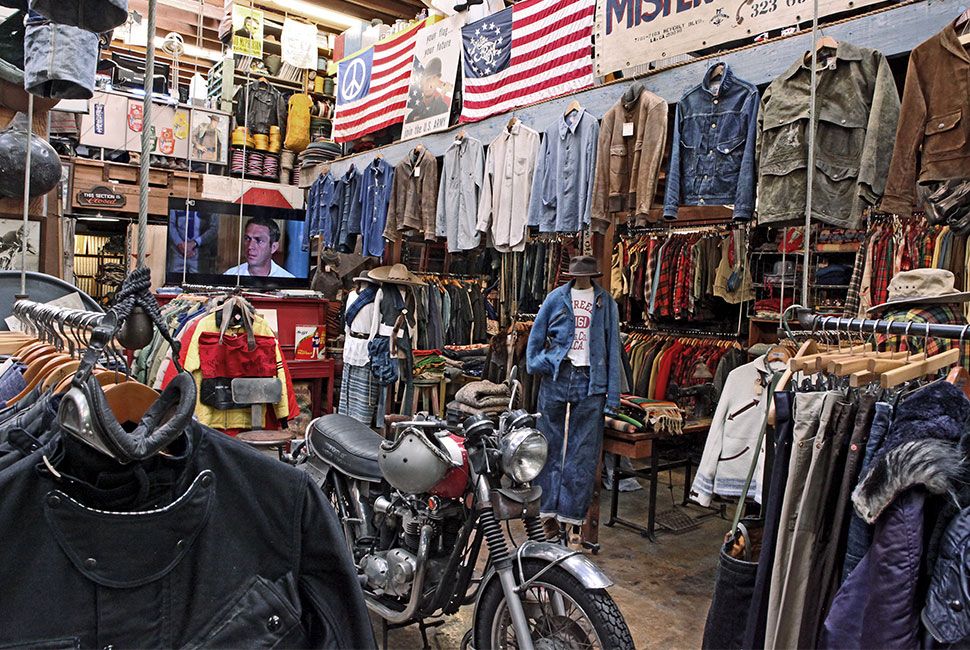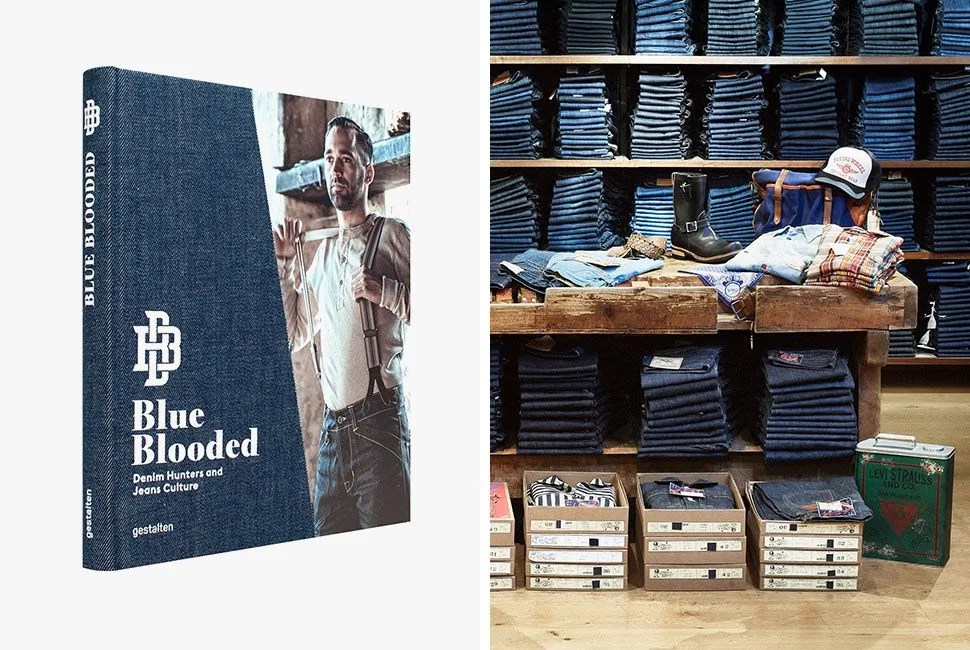The transition of jeans from workwear garment to omnipresent wardrobe staple has been written about extensively, but never with the scope presented in Blue Blooded by Thomas Stege Bojer and Josh Sims. The new coffee table book explores the history and construction of jeans and profiles notable figures in the denim world, such as Kiya Babzani, Scott Morrison and the Osaka Five. On the practical side, the book covers the best way to wash jeans, how to repair jeans and the things to consider when buying jeans. Whether you’re looking to learn more about your favorite pants, or you’re already a full-fledged denim head, Blue Blooded will provide countless pages of new insight.
Editor’s Note: The following excerpt is from Blue Blooded by Thomas Stege Bojer and Josh Sims (Gestalten). Copyright 2016.
Secondhand jeans played a vital role in the spread of denim fashion around the world. The first blue jeans in Europe and Japan were secondhand. Ultimately, it is secondhand jeans that motivated these markets to start making jeans themselves.
During the early 1980s, “there was a boom of vintage store in Europe selling American secondhand denim,” says trend expert Allan Kruse. The trail was blazed by store like American Classics in London, vintage stores in Amsterdam, and A.N.G.E.L.O. in Northern Italy. Camden Market and Portobello Road in London as well as Clignancourt in Paris also became important vintage hunting grounds. Even department stores were selling vintage denim. It quickly became a mainstream youth fashion.
By the mid-1980s, the economic recession hit the jeans market hard. This made the vintage denim trend go full-blown mainstream in 1985. It was “back to basics” for denim, with plenty of authentic jeanswear, cowboy inspiration, 1950s nostalgia, and the “hard times” look of washed-down and shredded jeans. It was also during these years that designers and maker realized they could capitalize on vintage denim.
By the late- 1980s, refined vintage stores like Charles Chevignon’s Trading Post and Chipie’s Au Vieax Continent had been established in Paris, inspired by the denim retail template of Japan. This sparked a second chapter for the vintage trend. Meanwhile, in the homeland of jeans there were only a few vintage stores in Los Angeles and New York City.

